How many ml in 1 cubic c - Study guides, Class notes & Summaries
Looking for the best study guides, study notes and summaries about How many ml in 1 cubic c? On this page you'll find 138 study documents about How many ml in 1 cubic c.
Page 3 out of 138 results
Sort by
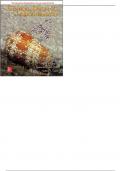
-
Introduction to General, Organic, and Biochemistry 10th Edition by Katherine Denniston - Test Bank
- Exam (elaborations) • 846 pages • 2023
-
- $24.17
- + learn more
General, Organic, and Biochemistry, 10e (Denniston) Chapter 1 Chemistry - Methods and Measurement 1) Which is the summary of a large amount of scientific information? A) hypothesis B) theory C) scientific law D) technology E) scientific method Answer: C Difficulty: 1 Easy Topic: Study of Chemistry Bloom's: Remember Section number: 01.02 Accessibility: Keyboard Navigation Subtopic: Scientific Method 2) What method used by scientists is the systematic approach to the discovery of new in...

-
Test Bank for Chemistry in Focus A Molecular View of Our World 5th Edition by Nivaldo
- Exam (elaborations) • 251 pages • 2023
-
Available in package deal
-
- $34.25
- + learn more
Chapter 1—Molecular Reasons MULTIPLE CHOICE 1. Which of these is the best definition of matter? a. The pull of gravity on an object. b. Anything that has weight and volume. c. Anything that has mass and occupies space. d. Anything that is directly proportional to weight. e. The measure of the amount of space an object occupies. ANS: C PTS: 1 2. Which of these statements is correct? a. The amount of carbon on earth is essentially constant. b. The amount of carbon on earth fluctuates...

-
Test Bank for Chemistry in Focus A Molecular View of Our World 6th Edition by Nivaldo J. Tro
- Exam (elaborations) • 300 pages • 2023
-
Available in package deal
-
- $34.25
- + learn more
Chapter 01 - Molecular Reasons 1. Which of these is the best definition of matter? a. b. c. d. e. ANSWER: POINTS: The pull of gravity on an object. Anything that has weight and volume. Anything that has mass and occupies space. Anything that is directly proportional to weight. The measure of the amount of space an object occupies. 2. Which of these statements is correct? a. Theamountofcarbononearthisessentiallyconstant. b. The amount of carbon on earth fluctuates with the seasons. c....
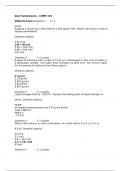
-
CHEM133 Week 7 Midterm Exam (March)
- Exam (elaborations) • 9 pages • 2023
- Available in package deal
-
- $32.99
- + learn more
1. Question: Suppose a house has a floor area of 2,250 square feet. What is this area in units of square centimeters? 2. Question: A piece of antimony with a mass of 17.41 g is submerged in 46.3 cm3 of water in a graduated cylinder. The water level increases to 48.9 cm3. The correct value for the density of antimony from these data is: 3. Question: Liquid nitrogen boils at –195.8°C. Express the boiling point of liquid nitrogen in kelvin. 4. Question: What is the volume, in cubic centimeter...

-
Chemistry 10th Edition International Edition by Kenneth W - Test Bank.
- Exam (elaborations) • 973 pages • 2023
-
Available in package deal
-
- $34.25
- + learn more
Chapter 1—The Foundations of Chemistry MULTIPLE CHOICE 1. Which of the following statements is incorrect? a. A body in motion possesses kinetic energy because of its motion. b. An object possesses potential energy because of its position or composition. c. Nuclear energy is an important kind of potential energy. d. Chemical reactions and physical changes that release energy to their surroundings are endothermic. e. The Law of Conservation of Matter and Energy states that the combined ...
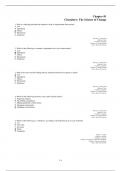
-
best chemistry test bank with correct reference topics under every question
- Exam (elaborations) • 760 pages • 2023
-
- $15.00
- + learn more
1-1 Chapter 01 Chemistry: The Science of Change 1. What is a unifying principle that explains a body of experimental observations? A. Law B. Hypothesis C. Theory D. Phenomena E. Prediction Blooms: 2. Understand Difficulty: Easy Gradable: automatic Subtopic: Scientific Method Topic: Study of Chemistry 2. Which of the following is a tentative explanation for a set of observations? A. Law B. Hypothesis C. Theory D. Phenomena E. Prediction Blooms: 2. Understand Difficulty: Easy Gradable: automatic S...
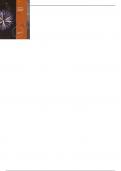
-
Test Bank For Chemistry And Chemical Reactivity International Edition 8th Edition By John C. Kotz
- Exam (elaborations) • 300 pages • 2023
-
Available in package deal
-
- $34.25
- + learn more
Chapter 1—Basic Concepts of Chemistry MULTIPLE CHOICE 1. A hypothesis is a a. mathematical formula that models a pattern of behavior. b. concise statement of a behavior that is always the same under the same conditions. c. set of experiments designed to test a theory. d. well-tested, unifying principle that explains a body of facts. e. tentative explanation or prediction based upon experimental observations. ANS: E 2. A theory is a a. concise statement of a behavior that is always t...
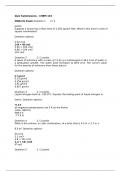
-
CHEM133 Week 7 Midterm Exam (March)
- Exam (elaborations) • 9 pages • 2023
- Available in package deal
-
- $39.99
- + learn more
1. Question: Suppose a house has a floor area of 2,250 square feet. What is this area in units of square centimeters? 2. Question: A piece of antimony with a mass of 17.41 g is submerged in 46.3 cm3 of water in a graduated cylinder. The water level increases to 48.9 cm3. The correct value for the density of antimony from these data is: 3. Question: Liquid nitrogen boils at –195.8°C. Express the boiling point of liquid nitrogen in kelvin. 4. Question: What is the volume, in cubic centimeter...
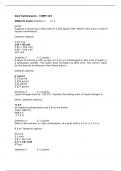
-
CHEM133 Week 7 Midterm Exam (All Correct)
- Exam (elaborations) • 9 pages • 2023
-
Available in package deal
-
- $35.48
- + learn more
1. Question: Suppose a house has a floor area of 2,250 square feet. What is this area in units of square centimeters? 2. Question: A piece of antimony with a mass of 17.41 g is submerged in 46.3 cm3 of water in a graduated cylinder. The water level increases to 48.9 cm3. The correct value for the density of antimony from these data is: 3. Question: Liquid nitrogen boils at –195.8°C. Express the boiling point of liquid nitrogen in kelvin. 4. Question: What is the volume, in cubic centimeter...
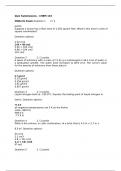
-
CHEM133 Week 7 Midterm Exam (March)
- Exam (elaborations) • 9 pages • 2023
-
- $31.49
- + learn more
1. Question: Suppose a house has a floor area of 2,250 square feet. What is this area in units of square centimeters? 2. Question: A piece of antimony with a mass of 17.41 g is submerged in 46.3 cm3 of water in a graduated cylinder. The water level increases to 48.9 cm3. The correct value for the density of antimony from these data is: 3. Question: Liquid nitrogen boils at –195.8°C. Express the boiling point of liquid nitrogen in kelvin. 4. Question: What is the volume, in cubic centimeter...

$6.50 for your textbook summary multiplied by 100 fellow students... Do the math: that's a lot of money! Don't be a thief of your own wallet and start uploading yours now. Discover all about earning on Stuvia


